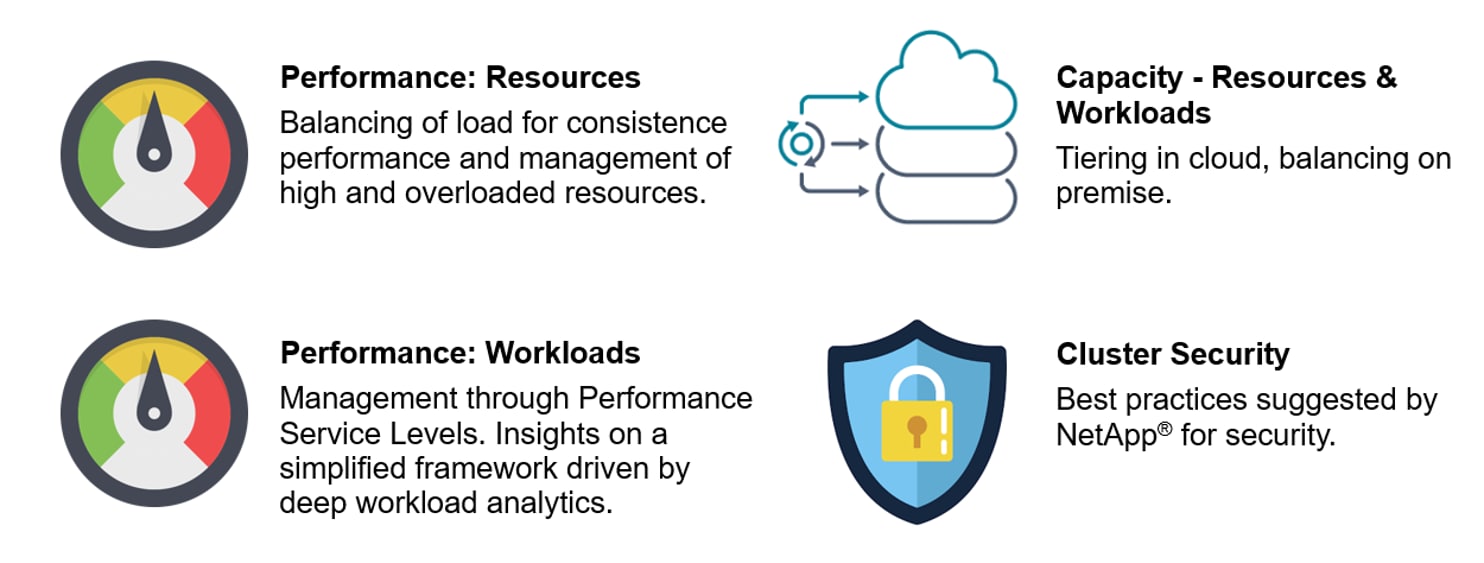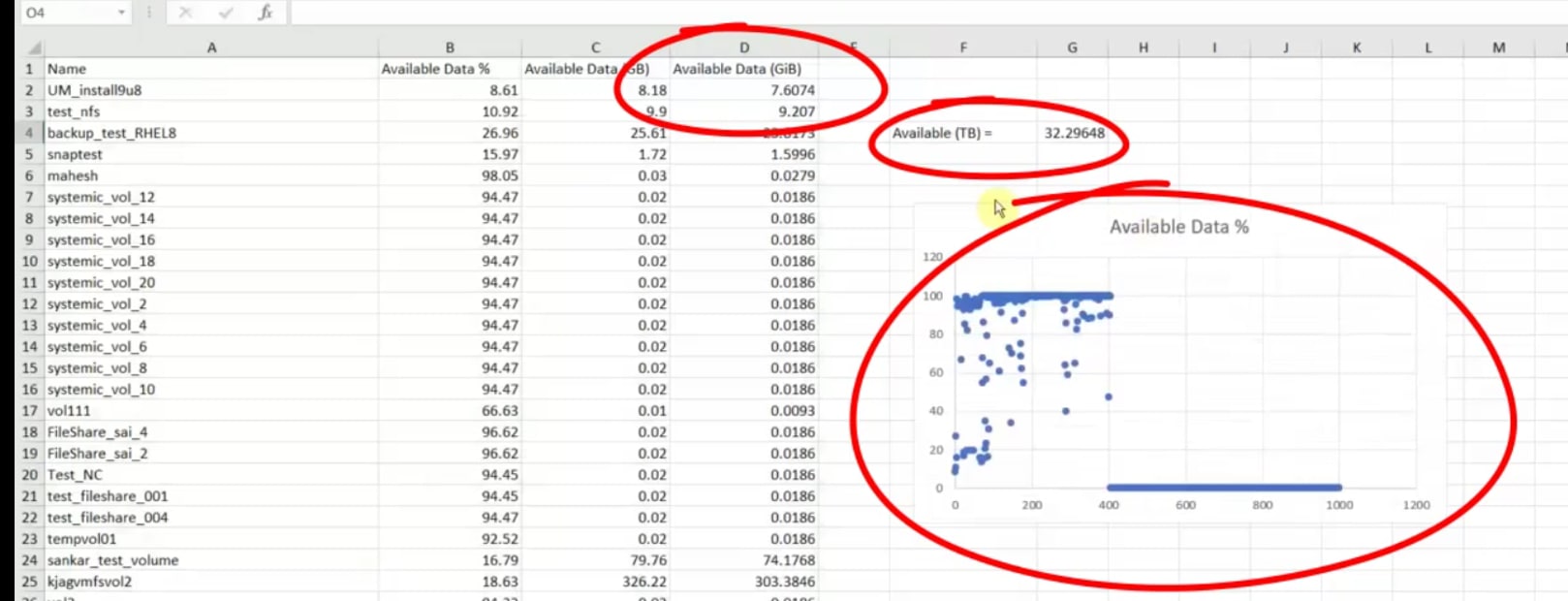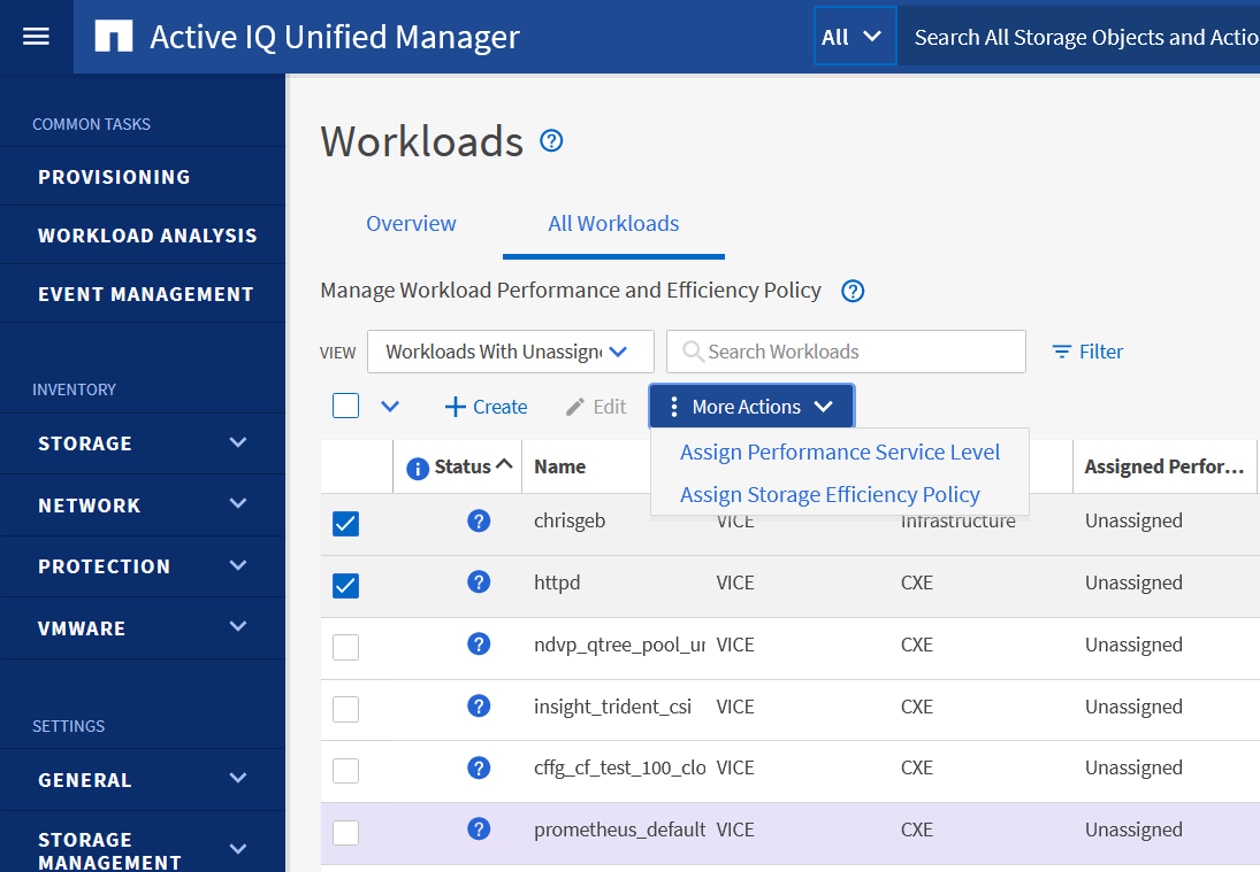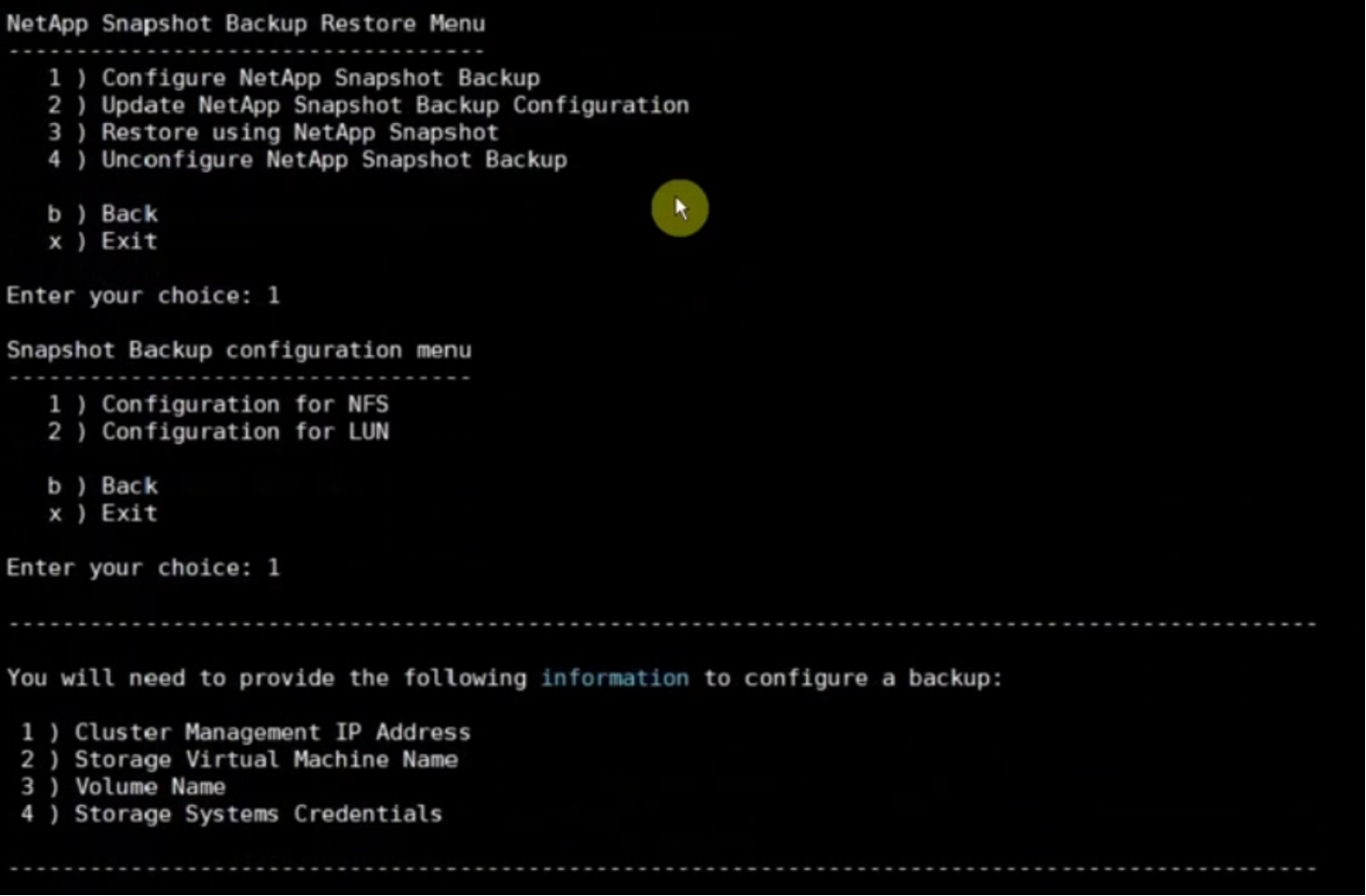Introducing Active IQ Unified Manager 9.8


Jacob John Andathethu
 I’m pleased to announce the release of NetApp® Active IQ® Unified Manager 9.8. We’ve added a lot of exciting features for monitoring and reporting and for active management. The previous release, Active IQ Unified Manager 9.7, introduced several enhancements, new features, and product integration. It was wildly popular with storage admins and IT generalists for monitoring NetApp ONTAP® storage in their data centers and for provisioning workloads. The release of Active IQ Unified Manager 9.8 focuses on the enhancement of existing features like self-managing storage, reporting, Active IQ Unified Manager backup and restore, REST API, and VMware awareness.
I’m pleased to announce the release of NetApp® Active IQ® Unified Manager 9.8. We’ve added a lot of exciting features for monitoring and reporting and for active management. The previous release, Active IQ Unified Manager 9.7, introduced several enhancements, new features, and product integration. It was wildly popular with storage admins and IT generalists for monitoring NetApp ONTAP® storage in their data centers and for provisioning workloads. The release of Active IQ Unified Manager 9.8 focuses on the enhancement of existing features like self-managing storage, reporting, Active IQ Unified Manager backup and restore, REST API, and VMware awareness.
If you don’t know what our Active IQ Unified Manager does, check out this video.
In this blog, we’ll discuss the new features and enhancements that have been introduced in Active IQ Unified Manager 9.8 briefly. This first blog in the series is an overview of the additions to Active IQ Unified Manager 9.8.
Self-managing storage
Storage performance and capacity lifecycle management feature were introduced in Active IQ Unified Manager 9.7, and management actions are further expanded in the 9.8 release. The objective is to offer customers a simplified user experience to quickly fix one or all abnormalities and to dismiss one or all actions that don’t align with their policies.Active IQ Unified Manager 9.8 performs lifecycle management in the following four keys areas:
- Storage resource performance
- Storage workload performance
- Storage capacity
- Storage security
Which lifecycles does Active IQ Unified Manager simplify?
Active IQ Unified Manager 9.8 provides lifecycle management for these areas, which include preventive, proactive, and reactive actions. It offers options for customers to remediate issues with a Fix It button and a Dismiss button. When the user clicks Fix It, the Active IQ Unified Manager takes the appropriate remediation actions for the associated events. The following table describes these Fix It options.
| Storage resource performance management fixes | ||
| Event name and description | Management action | Fix it operation |
| Performance capacity used threshold breached Indicates that the node could become overloaded if usage is not reduced by one or more highly active workloads. This event is generated when the node performance capacity used value is greater than 100% for more than 12 hours. | Limit high load on the node. | Unified Manager identifies the volume with the highest IOPS and applies a QoS policy using the historical expected and peak IOPS levels to reduce the load on the node. |
| Dynamic event warning threshold breached Indicates that the node is already operating in an overloaded state due to the abnormally high load of some of the workloads. | Reduce overload on the node. | Unified Manager identifies the volume with the highest IOPS and applies a QoS policy using the historical expected and peak IOPS levels to reduce the load on the node. |
| Cluster load imbalance threshold breached Indicates that the load is imbalanced among the nodes in the cluster. This event is generated when the performance capacity used variance is more than 30% between nodes. | Balance the cluster workloads. | Unified Manager identifies the best volume to move from one node to the other to reduce the imbalance and then moves the volume. |
| Storage capacity management fixes | ||
| Event name and description | Management action | Fit it operation |
| Cluster capacity imbalance threshold breached Indicates that the capacity is imbalanced among the aggregates in the cluster. This event is generated when the used capacity variance is more than 70% between aggregates. | Balance the cluster capacity. | Unified Manager identifies the best volume to move from one aggregate to another to reduce the imbalance and then moves the volume. |
| Storage tier policy mismatch detected The volume has lots of inactive data and the current tiering policy is set to Snapshot-Only or None. | Enable automatic cloud tiering. | Because the volume already resides in a FabricPool, it changes the tiering policy to Auto so that inactive data is moved to the lower-cost cloud tier. |
| Storage tier mismatch detected The volume has lots of inactive data, but it does not reside in a cloud-enabled storage tier (FabricPool). | Change the volume’s storage tier. | Moves the volume to a cloud-enabled storage tier and sets the tiering policy to Auto to move inactive data to the cloud tier. |
| Storage security management fixes | ||
| Event name and description | Management action | Fix it operation |
| Audit log disabled The audit log is not enabled for the storage VM. | Enable audit logging for the storage VM. | Enables audit logging on the storage VM. |
| Login banner disabled The login banner for the cluster should be enabled to increase security by making access restrictions clear. | Set login banner for the cluster. | Sets the cluster login banner to Access Restricted to Authorized Users. |
| Login banner disabled The login banner for the storage VM should be enabled to increase security by making access restrictions clear. | Set login banner for the storage VM. | Sets the storage VM login banner to Access Restricted to Authorized Users. |
| SSH is using insecure ciphers Ciphers with the suffix -cbc are considered insecure. | Remove insecure ciphers from the cluster. | Removes the insecure ciphers, such as aes192-cbc and aes128-cbc, from the cluster. |
| SSH is using insecure ciphers Ciphers with the suffix -cbc are considered insecure. | Remove insecure ciphers from the storage VM. | Removes the insecure ciphers, such as aes192-cbc and aes128-cbc, from the storage VM. |
| AutoSupport HTTPS transport disabled The transport protocol used to send AutoSupport® messages to technical support should be encrypted. | Set HTTPS as the transport protocol for AutoSupport messages. | Sets HTTPS as the transport protocol for AutoSupport messages on the cluster. |
Events REST API
Active IQ Unified Manager 9.8 has added REST API support for retrieving the events running in an Active IQ Unified Manager server. The REST APIs under the “management-server/event” category enables you to retrieve the events that are generated for the monitored clusters in your data center. In this release, only GET operations are possible using the events API. By using the /management-server/events API, you can query the events in your data center, including historical data. Use the inbuilt filters, such as name, impact level, impact area, severity, state, resource name, and resource type, to view specific events.Reporting: bring your own customized Excel
In Active IQ Unified Manager 9.8, you can bring your own excel sheets with customized reports. With this feature, you can customize existing UM reports by creating a formula, Pivot tables, charts, etc, and upload it back into UM. Now each time the report is created manually or through a schedule, the customized report will be generated with the latest updated values. You can use this feature in 3 simple steps.- Create a report view and save the view.
- After you have the view saved, you can download it in Excel Workbook format (.xlsx). Use advanced Excel features to customize the reports like Multi-column sort, Complex filtering, Pivot tables, and charts.

- Once the excel sheet is customized according to your preference, save the file and upload the customized excel by selecting the Reports > Upload Excel button and select the file that you modified.

- Now go ahead and download the report. You will see that the customized reports with the updated parameter values has been generated.
VMware awareness enhanced to monitor MCC and SVM-DR configuration
With Active IQ Unified manager 9.8, one can view the configuration and performance metrics of NAS volumes or LUNs that are attached as datastores in a MetroCluster configuration or storage virtual machine (storage VM) disaster recovery (SVM DR) setup.View the datastores under the VMWARE > Virtual Machines page, click the VM inventory that hosts the datastore. Click the datastore object link. In the standard scenario, you can see the performance data of the volumes and LUNs in the primary storage VM.
In case of a disaster, and a consecutive Switchover to the secondary storage VM, the datastore link points to the performance metrics of the volume or LUN in the secondary storage VM. This is reflected after the next cycle of clusters and SVM discovery (acquisition) is complete.
After a successful switchback, the datastore link again reflects the performance metrics of the volume or LUN in the primary storage VM. This is reflected after the next cycle of clusters and storage VM discovery is complete.
Bulk assignment of performance service levels and storage efficiency policies
Now you can assign Performance Service Levels (PSLs) or Storage Efficiency Policies (SEPs) to multiple storage workloads together at a time. This is possible under the Inventory – > workloads page. Select the checkboxes for the workloads to which you want to assign the policy, or select all the workloads in your data center.After selecting the required workloads, click on More Actions. For assigning a PSL, select “Assign Performance Service Level” from the drop-down menu. For assigning a SEP, select “Assign Storage Efficiency Policy” from the drop-down menu. A pop-up is displayed for you to select the policy. Select the appropriate policy and click Apply. The number of workloads on which the policies are assigned is displayed. The workloads on which the policies are not assigned are also listed, with the cause.
 For more information on this feature, check out the Active IQ Unified Manager 9.8 Documentation
For more information on this feature, check out the Active IQ Unified Manager 9.8 Documentation
Backup & Restore using ONTAP Snapshots
Active IQ Unified Manager 9.8 has introduced Backup and Restore of the Unified manager DB using NetApp Snapshots. NetApp Snapshots backup creates a point-in-time image of the Unified Manager database and configuration files that you can use to restore in case of a system failure or data loss. Please note that this functionality is available only when Unified Manager is installed on a Red Hat Enterprise Linux or CentOS Linux server.Snapshot backups take very little time, usually just a few minutes, and the Unified Manager database is locked for a very short timeframe, so there is very little disruption to your installation. Because the Snapshot is created on an ONTAP cluster, you can take advantage of other NetApp features such as SnapMirror to create secondary protection, if required.

Install & Start using Active IQ Unified Now 9.8!
Go ahead, install, and start using Active IQ Unified Manager 9.8 and see how it can solve your ONTAP monitoring, reporting, and active management needs. Get hold of all the new feature enhancements and see how Unified Manager can easily remediate events, generate customized reports, bulk assign performance service level to multiple workloads, and take Active IQ Unified Manager backups using NetApp Snapshot technology.Where Can I Read More?
Check out the blogs that discuss the new features of Active IQ Unified Manager 9.8 in detail. Visit the Where can I learn more about Active IQ Unified Manager 9.8? post that lists the links to these blogs.Jacob John Andathethu
Jacob is a dynamic professional, working as a Technical Marketing Engineer for NetApp with overall 15 years of experience focusing on Active IQ Unified Manager. He has experience in architecting solutions around various manageability tools for datacenter. Jacob helps customers understand and adopt DevOps tools that have tight integration with NetApp storage. He is passionate about technology and loves taking trainings, technical workshops, and writing blogs.